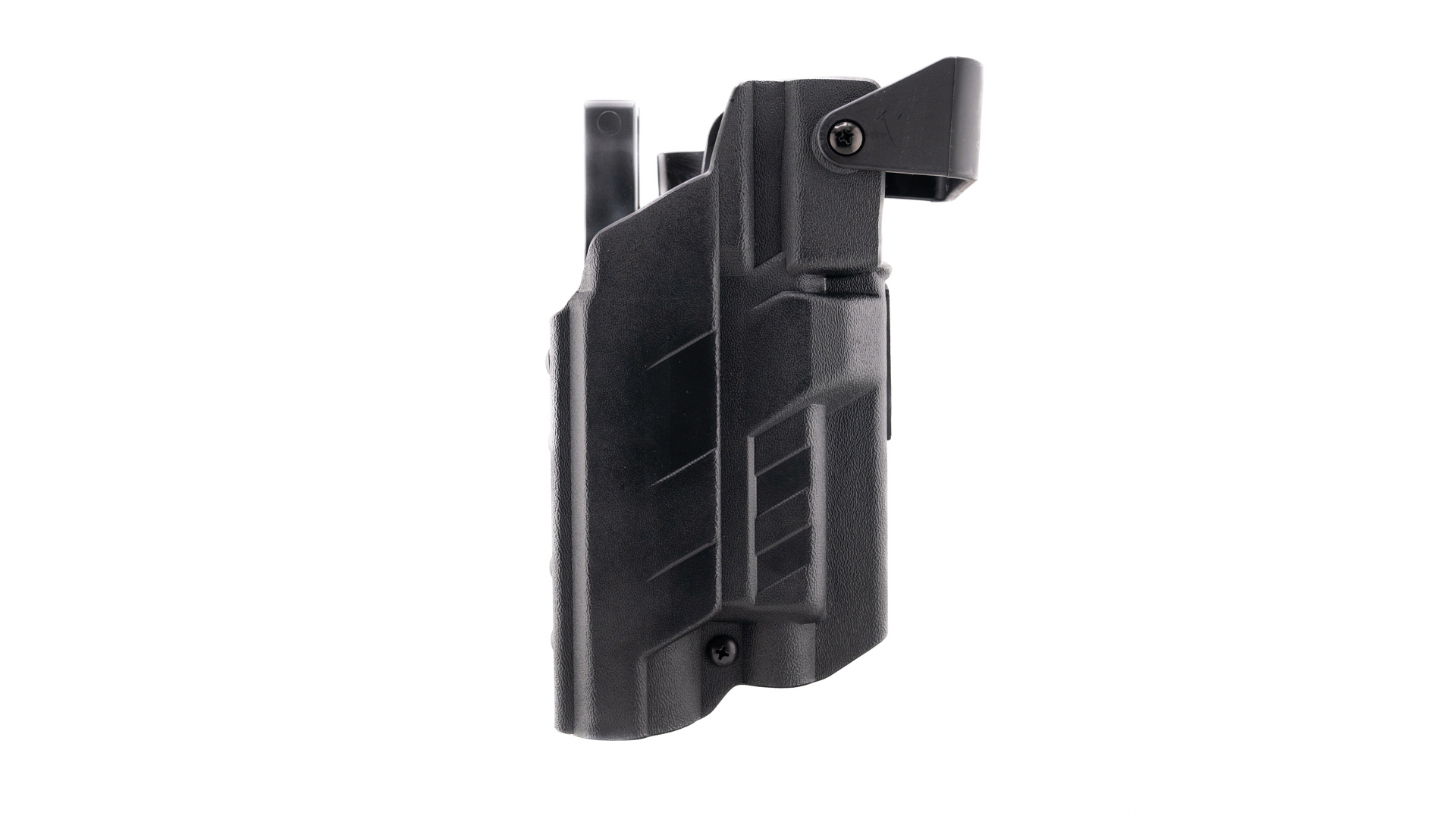
You could break down the various opinions on self-defense handguns into three categories. On one extreme, there are those who believe a self-defense handgun should be compact, easily concealed, and comfortable to shoot. At the other end of the spectrum you have those who think power is the most important aspect. And then, like with just about everything else for which there are opinions, you have those who ride the middle of the road and try to balance the extremes.
From its conception, the 10mm Auto was an extreme; it was intended to appeal to those who felt power was the most important consideration in a self-defense handgun. Ironically, with power as the driving force for its creation, the 10mm may be best known for inspiring a lesser powered cartridge.
History
The founder of the American Pistol Institute (Gunsite Academy)—Jeff Cooper—is credited with the inspiration for the 10mm Auto. Cooper wanted a 200-grain bullet with a muzzle velocity of 1,000 fps. What he ultimately got—with the help of Norma—was quite a bit more. With a SAAMI maximum average pressure limit of 37,500 psi, some of today’s 200-grain 10mm loads can approach and even exceed 1,200 fps. Out of a full-size 1911 they can generate 73-percent more recoil energy than a .45 ACP. Considering that some find a .45 ACP objectionable to shoot, you can see the level of power we’re talking about.
The first 10mm pistol was the Bren Ten, built by Dornaus & Dixon Enterprises. This was a big pistol and there were only about 1,500 made. It wasn’t until Colt began offering the Delta Elite in 1987 that the 10mm had a reliable home. In 1990 the FBI even went to the 10mm in the Smith & Wesson Model 1076, but in true government fashion, they opted for a reduced power load. It was like they equipped their agents with .357 Magnums and gave them .38 Special ammo. (Interestingly, some police agencies did that very thing.) The ballistic performance of this, “FBI load,” eventually led to their adoption of the .40 S&W and a 180-grain bullet at about 950 fps. And guess what, we were right back to the 45 ACP. 
Power
But, it’s the power of the 10mm that’s alluring. It’s the notion that when it comes to defensive handguns, 600-plus foot-pounds of energy is substantially better than 400 foot-pounds of energy. There’s really no practical way we can quantify the real-world advantage that 200 foot-pounds of energy can give a handgun bullet. What we can do is look at terminal performance testing in various test mediums, like 10-percent ordnance gelatin, and make a guess.
The reality is, what you really get with the 10mm is near guaranteed terminal performance. For bullets to work—expand and penetrate—they need velocity. With the velocities the 10mm can generate, it’s rare for a bullet to not expand to about 1.5 times its original diameter and to not penetrate to at least the FBI’s minimum of 12 inches. There are very few defensive handgun cartridges that can make this claim. Sure, a 9mm can do it, a .40 S&W can do it, and so can a .45 ACP. But, none of these cartridges can do that every time with such varied styles and weights of bullets. They simply do not have the velocity.
Is the 10mm tremendously more effective at stopping a bad guy than a .45, .40, or 9? No. But what its power does—at least according to FBI parameters—is allow for it to deliver a more consistently reliable level of terminal performance. The thing to remember is that in exchange for this near impossible to quantify ballistic advantage, felt recoil is greatly enhanced.
Editor's Pick
There are more 10mm handguns to choose from than you might think; in recent years the cartridge has seen a resurgence in popularity. In addition to the various custom options, Rock Island Armory, Colt, Remington, Magnum Research, SIG Sauer, Springfield Armory and Ruger, all offer 1911s. Glock has a half-dozen variants, and EAA Corp. has their Witness which is available in small, medium, and large versions. There are several Springfield XD 10mms, and Ruger and Smith & Wesson offer several revolvers in 10mm. That’s a lot to choose from.
The 10mm is a powerful cartridge and in compact, lightweight handguns, I don’t care how macho you think you are, it’s a handful. This means a full-size pistol—something in the 40-ounce range—is the best option for this cartridge. Chances are, if you’re looking for a more compact pistol, you’re probably considering a lesser cartridge.
If I were to pick a 10mm to carry for protection, I’d have to go with the Colt Delta Elite; it’s been around longer than any other 10mm handgun. There’s also lots of ammunition to choose from and it’s hard to go wrong with any good 180 to 200-grain jacketed hollow point. Either the Hornady Critical Duty or SIG Sauer V-Crown load should deliver exceptional performance in the self-defense role.


































